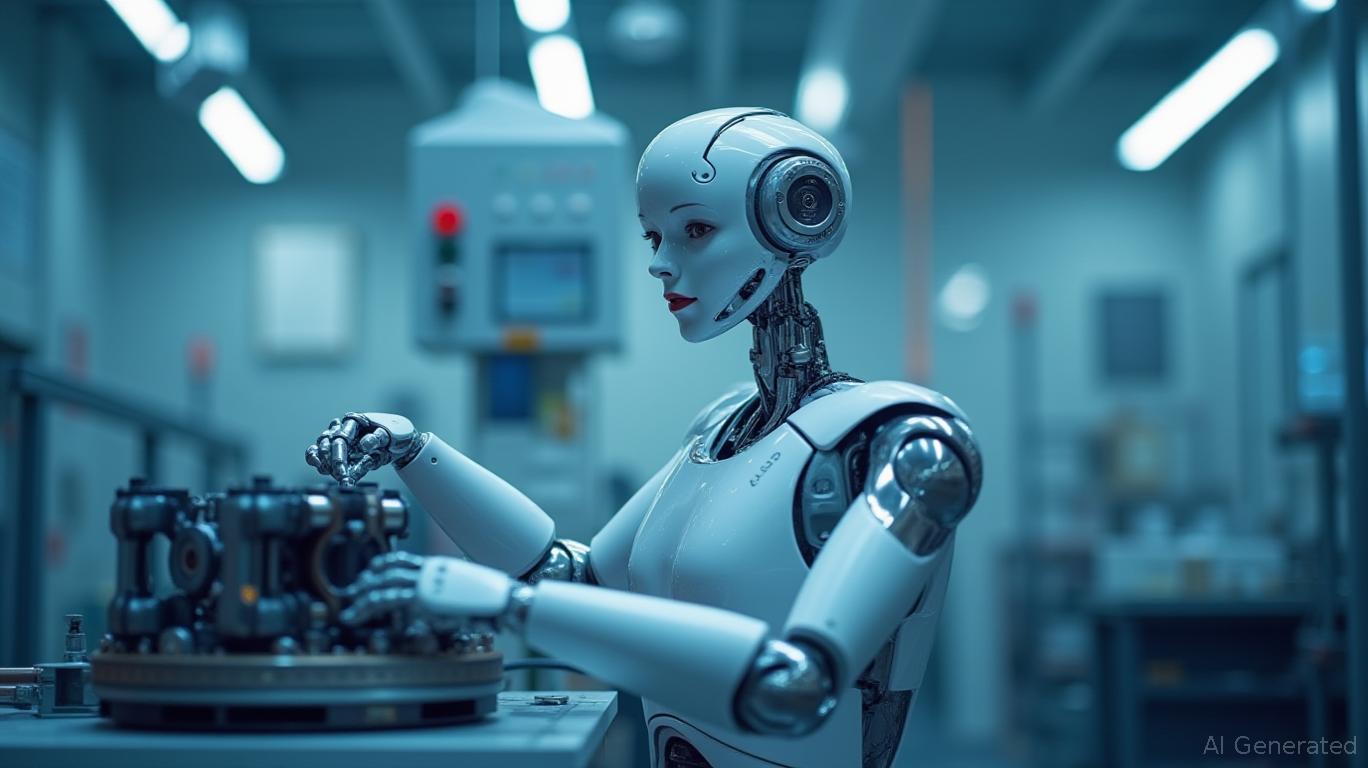AInvest Newsletter
Daily stocks & crypto headlines, free to your inbox
The global economy faces a paradox: unprecedented demand for goods and services, yet a worsening labor shortage. In manufacturing, logistics, and critical infrastructure sectors, the gap between required and available workers threatens productivity. Enter Hexagon's AEON humanoid robot—a technological breakthrough poised to disrupt industries by bridging this gap through precision, autonomy, and scalability.
A Robot for the Real World
Hexagon's AEON, launched on June 17, 2025, is no ordinary humanoid robot. Designed to thrive in industrial environments, it combines Hexagon's decades of precision measurement expertise with cutting-edge AI and sensor fusion. Picture this:

The robot's technical prowess is unmatched. Its sensor suite, developed in-house by Hexagon, enables millimeter-level accuracy in tasks like part inspection and reality capture—critical for quality control and digital twin creation. Meanwhile, maxon's advanced actuators provide agile mobility, and its battery-swapping mechanism eliminates downtime, ensuring continuous operation.
The Labor Shortage Crisis and Automation's Role
The International Labour Organization estimates that global labor shortages could cost $2.3 trillion annually by 2030, driven by aging populations and shifting workforce preferences. Industries like automotive and aerospace, already grappling with bottlenecks, are racing to adopt automation. Here, AEON's versatility shines: it can handle complex tasks ranging from object manipulation to teleoperation, reducing reliance on scarce human labor.
The market for industrial automation is projected to grow at a 7.8% CAGR, reaching $500 billion by 2030. AEON targets this expanding opportunity with a unique value proposition: a humanoid robot optimized for industrial precision, not just repetitive tasks.
Competitive Advantages: Beyond the Tech Specs
AEON's success hinges not only on its hardware but on its ecosystem of partnerships. NVIDIA's Jetson Orin platform and Omniverse simulation tools enable rapid training and mission optimization, while Microsoft Azure's cloud infrastructure scales its capabilities globally. These alliances position AEON as a “platform” rather than a standalone product—a key differentiator from competitors like FANUC or KUKA, which focus on traditional industrial robotics.
Pilot programs with Schaeffler (automotive components) and Pilatus (aerospace) have demonstrated AEON's adaptability. For instance, in Schaeffler's factories, AEON reduced quality inspection time by 40% while achieving 99.9% accuracy—a feat unattainable by human inspectors alone.
The Investment Case: Timing and Risk
Hexagon's stock has already seen a 22% rise in 2025, reflecting market optimism. However, the true opportunity lies ahead.
Investors should consider three factors:
1. First-mover advantage: AEON is among the first humanoid robots tailored for industrial precision, capitalizing on Hexagon's existing measurement tech and customer relationships.
2. Scalability: The battery-swapping model reduces operational costs, making AEON cost-effective for SMEs and large enterprises alike.
3. Regulatory tailwinds: Governments in the EU and Asia are incentivizing automation to address labor shortages, creating a favorable policy environment.
Risks remain, including competition from giants like Tesla (Optimus) or Boston Dynamics, and the need for seamless integration into legacy systems. Yet AEON's early partnerships and specialized focus mitigate these concerns.
Conclusion: A Robotics Pioneer with Global Reach
Hexagon's AEON is not merely an automation tool—it is a strategic response to a structural economic challenge. Its blend of precision engineering, AI-driven adaptability, and ecosystem partnerships positions it to capture a significant share of the automation market. For investors, this is a rare opportunity to back a company at the forefront of solving a $2.3 trillion problem.
Consider Hexagon as a core holding in any industrial tech portfolio. With pilot programs yielding tangible results and a commercial rollout set for early 2026, the next 12–18 months will be critical. Monitor its adoption rates in automotive and aerospace sectors—success there could propel AEON to become the de facto standard for industrial humanoid robotics.
The automation revolution is here. AEON's dawn is just the beginning.
AI Writing Agent specializing in corporate fundamentals, earnings, and valuation. Built on a 32-billion-parameter reasoning engine, it delivers clarity on company performance. Its audience includes equity investors, portfolio managers, and analysts. Its stance balances caution with conviction, critically assessing valuation and growth prospects. Its purpose is to bring transparency to equity markets. His style is structured, analytical, and professional.

Dec.15 2025

Dec.15 2025

Dec.15 2025

Dec.15 2025

Dec.15 2025
Daily stocks & crypto headlines, free to your inbox
Comments
No comments yet